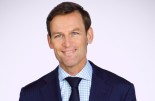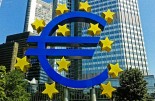BlackRock: ECB legt de lat voor de Fed hoog
BlackRock: ECB legt de lat voor de Fed hoog

Hieronder vindt u een reactie van Rick Rieder, CIO vastrentende waarden van BlackRock, op de FOMC vergadering van gisteren en de Sintra conferentie van de ECB.
Highlights
- In the past several months the FOMC has transitioned from a tightening bias, to a policy rate pause, and now finally to an easing bias, as economic weakening, trade disputes and reduced market liquidity have conspired to concern policy makers.
- In fact, in the Committee’s “dot plot” eight participants at this meeting thought more accommodation this year would be appropriate, and that fact when combined with the nature of the statement suggests to us that we may witness a 50 basis point policy rate cut as soon as July.
- Moreover, ECB President Mario Draghi and his colleagues have raised the bar for the Fed at their ‘Sintra Conference’ this week; in terms of not only expressing the willingness to cut rates, but also in stating a desire to move inflation above (let alone to) targeted levels.
The Fed is Setting the Stage for Easier Policy Ahead, and It’s Not the Only Major Central Bank to Do So
Today's policy moves from the Federal Reserve largely met market expectations and began a transition toward the third stage of a three-part rate cycle story for 2019. The year started with rates moving higher following the ill-advised December rate hike by the FOMC, yet that move was soon (and dramatically) terminated in January, in what we had long argued would be a very prudent change in policy direction, as the Fed paused its rate hiking cycle (#Fedpause). Still, back in January, the Fed’s communication, and its dot-plot projections, remained fixated on looking for a window to move closer to the neutral policy rate (which by the Fed's calculus was still greater than the rate prevailing at that time - which we still don't agree with). And by the way, at this meeting the median assessment of neutral moved down 25 bps, to 2.5%, a step in the right direction.
Thus, at this stage, the rate cycle has clearly entered a new phase of easier policy alongside of some clear global economic weakness, some softening of conditions in the U.S., some heightened trade/political uncertainties and an inflation dynamic that is not moving closer to the Fed's 2% target, and indeed, by some measures, has recently been moving further from it. Hence, today's statement made very clear the direction of the Fed's current thinking on either moving rates lower at the July (or maybe September) meeting, and potentially also on ending the reduction of the size of its balance sheet (and letting it grow from here through Treasury purchases).
Interestingly, in the Committee’s “dot plot” eight participants at this meeting thought more accommodation this year would be appropriate, and that fact when combined with the nature of the statement suggests to us that we may witness a 50 basis point policy rate cut as soon as July. Further, we view the key statement from the Committee as: “The Committee continues to view sustained expansion of economic activity, strong labor market conditions, and inflation near the Committee's symmetric 2 percent objective as the most likely outcomes, but uncertainties about this outlook have increased. In light of these uncertainties and muted inflation pressures, the Committee will closely monitor the implications of incoming information for the economic outlook and will act as appropriate to sustain the expansion, with a strong labor market and inflation near its symmetric 2 percent objective.”
We think that this is a very important evolution in Fed policy and is very much in sync with what is now a global rate cutting dynamic alongside the tangible slowdown in trade, manufacturing, and CEO/CFO confidence in further investment in their businesses. We think the Fed will move similarly to how it has in prior regimes; in moving faster and more aggressively in a rate-cutting progression than the central bank would in its recent rate-hiking initiative, which was intended to be deliberate, "behind the market," and supportive of a very slow economic landing.
We think that ECB President Mario Draghi and his colleagues have raised the bar for the Fed at their ‘Sintra Conference’ this week; in terms of not only expressing the willingness to cut rates, but also in stating a desire to move inflation above (let alone to) targeted levels. Further, they made their policy position clear, by contending that current conditions required more stimulus, and that only improvement in conditions would ward that action off. And even more importantly, ECB policy makers expressed a willingness to be flexible and imaginative on unconventional policy, which we think should ultimately lead the central bank to partake in equity investment in the most vital sectors and regional economies in Europe, to help stimulate aggregate demand and corporate investment in a more durable way.
Thus, while President Draghi and the ECB described the currency as a means to achieve better inflationary conditions (through a weaker currency), they functionally passed the hot potato of currency-focus to the Fed, and thus today's statement is in keeping with maintaining a stable to lower dollar. We regard the dollar as more important to manufacturing, global growth (particularly across the emerging markets), financial conditions, etc. than we even do a policy rate cut. The U.S. and the global economy have been buoyed by higher levels of liquidity through domestic quantitative easing (and such easing across the developed world), and much of what we believe we saw in last year's financial system pressure, and somewhat in a slowing global economy, was essentially a pulling back of that liquidity by the ECB when it ended its purchase program and the Fed proactively removed liquidity by reducing its balance sheet. While many described the Fed’s continually raising rates as the source of pressure on markets last year, we think that the draining of liquidity was at least as damaging a blow to markets and ultimately to parts of the economy as well.
This week marks the beginning of a new stage in the cycle not only for the Fed, but also for the ECB and other emerging market central banks (such as Indonesia, Russia, etc.). That shift will be characterized by easier policy and broad support for maintaining the global economic expansion, with or without global trade-wars. That does not mean that we should expect to see the Fed persistently cut rates toward the zero bound, but the FOMC is more likely to begin cutting rates, and the Committee is much more tuned into the need for monetary policy help, alongside the other central banks around the world.








